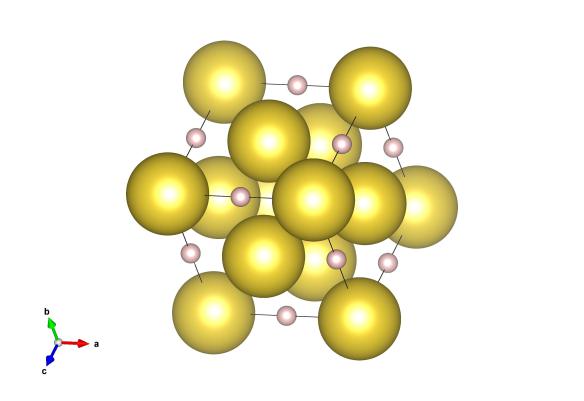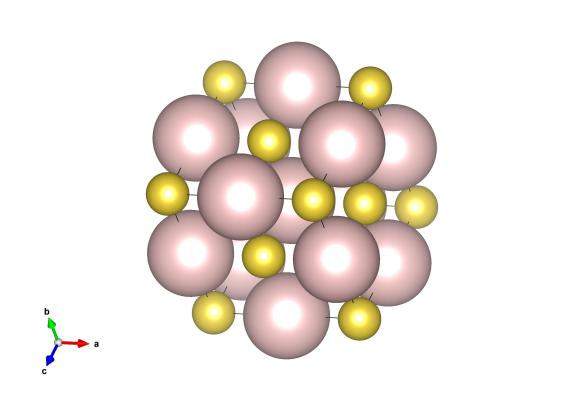Sodium hydride, simple yet historic
What is it?
Though it looks pretty simple, this structure has a special place in history as it was one of the first structures to be discovered with neutron diffraction. Though the positions of the sodium atoms in sodium hydride were known for some time (from X-ray diffraction), there was still debate if the hydrogen atoms were at the ½, ½, ½ point in the unit cell (a zincblende structure) or at the ½, 0, 0 point in the unit cell (a rock salt structure).
In the 1940s a number of researchers realised that instead of using X-rays to diffract off a material, they could use some different radiation – a beam of neutrons. This was only possible with the development of nuclear reactors, which could provide a steady source of neutrons.
Neutrons interact with matter in a very different way from X-rays. With X-rays, the amount they scatter from an atom is proportional to the number of electrons they have in their outer shell – for instance sodium atoms (with 11 electrons each) scatter much better than hydrogen atoms (with only one electron for each atom). Instead of interacting with the 'cloud' of electrons, neutrons diffract by interacting with the nucleus of the atom itself, and are not affected by its size, and so have a much more complex trend as you move through the elements of the Periodic Table. For instance heavy hydrogen (deuterium) has a scattering cross length from neutrons that is twice that of sodium.
The effect is that to X-rays the structure of sodium hydride looks like this:

The structure of sodium hydride showing the relative scattering of the sodium (yellow) and hydrogen (pink) atoms.
and to neutrons it looks like this!

And this shows the relative scattering of the heavy hydrogen (pink) and sodium atoms (yellow) to neutron diffraction.
This meant that the first researchers using neutron diffraction could work out that the structure of sodium hydride was, in fact, the rock salt structure. This paved the way for many other structures to be solved with neutron diffraction, locating atoms that would be difficult to see with X-rays.
Shull, one of the authors of this work on sodium hydride, was later to share the Nobel Prize in Physics for his development of neutron diffraction.






